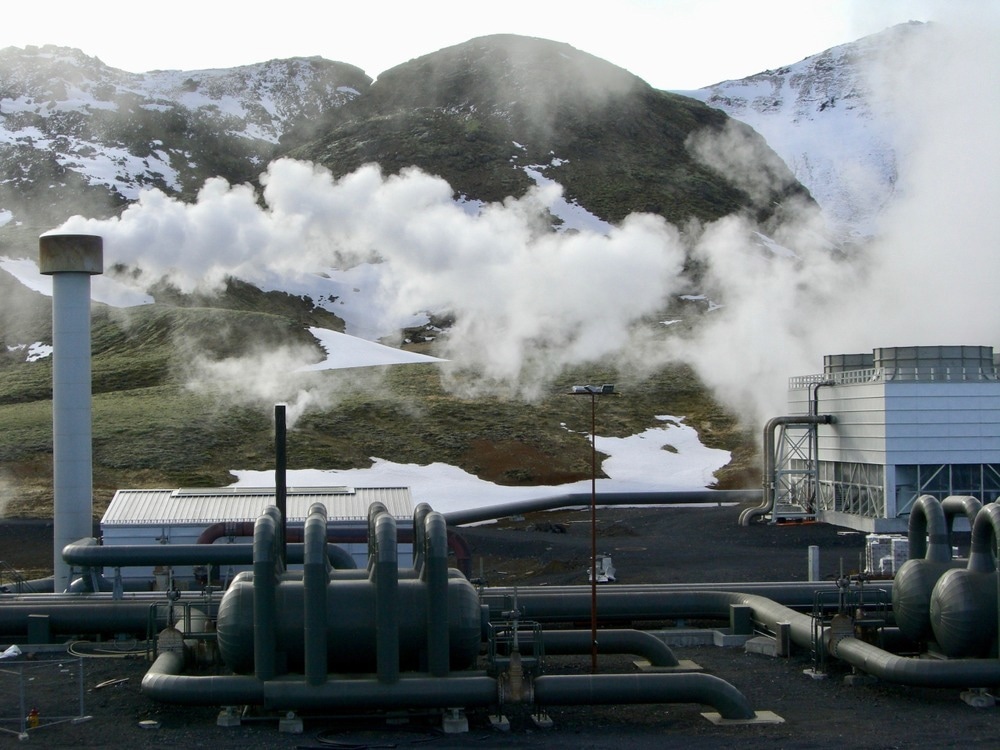Global temperatures have already increased by 1.1 ºC compared with pre-industrial levels. As a result, the world is already witnessing the devastating effects of climate change, such as rising sea levels, drought, flooding, and extreme weather, and their indirect effects, such as poverty, hunger, and expanding inequalities.

Hydrogen production plant. Image Credit: Glenmore/Shutterstock.com
To prevent global warming from exceeding 1.5 °C above pre-industrial levels, global greenhouse gas emissions must fall by 43% by 2030 if we are to reach net zero by 2050. Hydrogen (green hydrogen) energy offers an opportunity to move away from fossil fuels toward cleaner options. When burned, green hydrogen only emits water rather than harmful greenhouse gases.
There has been a recent shift from fossil fuels to renewable energy. Between 2020 and 2021, the global hydrogen demand increased by 5%. By the end of the decade, hydrogen is predicted to be used across all transportation sectors, including buses, rail, and HGVs. However, a much faster update of hydrogen energy is needed if the world is to meet its net zero emissions target by 2050.
Such an increase in hydrogen power use will require a significant upscaling of hydrogen production. While this will help the world meet its growing hydrogen demands, it will also introduce other challenges that must be overcome so that hydrogen energy can reach its full potential. Here, we discuss the risks involved in large-scale hydrogen production and how we might mitigate them.
Hydrogen and its Risks
Hydrogen is a highly flammable gas. When considering its hazards, it is easy to understand them by reference to natural gas, another flammable, non-toxic gas.
Similar to natural gas, hydrogen use runs the risk of accidental ignition, which can cause fires and explosions. In certain circumstances, explosions are more likely than fires, such as when pressure is generated in a confined enclosure, when the flame accelerates, or both.
In the worst-case scenario, hydrogen flames can burn faster than natural gas and even faster than most hydrocarbons.
Hydrogen ignition can turn into a detonation in certain conditions. While the conditions for detonation are unlikely for natural gas, they are possible for hydrogen. This presents a considerable risk to large-scale hydrogen production, given that a detonation can be even more catastrophic than an explosion, with its flames traveling faster than the speed of sound, fueling itself in a self-sustaining process.
While large-scale hydrogen production poses the serious risk of fires, explosions, and detonations, this risk can be mitigated by understanding the hydrogen’s flammability and taking this into account when designing hydrogen facilities.
Experts should be enlisted to engineer facilities that avoid producing high concentrations of hydrogen in the atmosphere. They should be based on but also exceed the safety standards of natural gas facilities.
Ammonia: A Highly Toxic Derivative of Hydrogen
Hydrogen constitutes around 17.65% of the mass of ammonia. As of 2022, it is the preferred mechanism of hydrogen transportation over large distances. This is partly due to it being a low-cost storage option for hydrogen.
Ammonia is a flammable gas, although it is much less flammable than hydrogen and harder to ignite. The risk of ammonia explosions, therefore, is minimal. Its toxicity, however, presents a more significant risk.
Exposure to ammonia burns the eyes, nose, throat, and respiratory tract. It can even cause blindness, lung damage, and death.
Ammonia’s toxicity poses risks even at low concentrations in the air - concentrations of 0.36% could cause 1% fatalities following 30 minutes of exposure.
Ammonia has been used for over a century, primarily by agriculture as fertilizer but also in various industrial applications, including plastics, explosives, and synthetic fibers.
While this has allowed us to understand ammonia and its potential hazards, these must be reassessed in the energy transition context, where the risks will likely differ.
For example, ammonia will likely be used as a fuel in the shipping industry. Due to the confined spaces on board ships, there is the potential for ammonia to accumulate in the air in fatal concentrations.
Safety measures applied to similar scenarios for hydrogen use do not apply here, as hydrogen mitigation strategies primarily focus on limiting its ignition potential.
With ammonia, reducing its potential to come into contact with humans is more important.
Mitigation strategies would be appropriate in this scenario, such as systems that detect ammonia levels in the air that can trigger the automated shut-down of ventilation systems.
Other emergency strategies, such as well-defined escape routes and breathing units, would also help mitigate the risk.
The Future of Large-Scale Hydrogen Production
Overall, large-scale hydrogen production has the potential to help the world move towards its goal of net zero emissions.
To meet this potential, hydrogen facilities and industries using hydrogen and its derivatives must carefully evaluate the risks and establish mitigation strategies to ensure safety standards are met.
References and Further Reading
Goal 13: Take urgent action to combat climate change and its impacts [online]. United Nations. Available at: https://www.un.org/sustainabledevelopment/climate-change/
Hydrogen Forecast to 2050 [online]. DNV. Available at: https://www.dnv.com/news/hydrogen-at-risk-of-being-the-great-missed-opportunity-of-the-energy-transition-226628
What is green hydrogen, and how can it help tackle the climate crisis? [online]. WWF. Available at: https://www.worldwildlife.org/stories/what-is-green-hydrogen-and-how-can-it-help-tackle-the-climate-crisis
Disclaimer: The views expressed here are those of the author expressed in their private capacity and do not necessarily represent the views of AZoM.com Limited T/A AZoNetwork the owner and operator of this website. This disclaimer forms part of the Terms and conditions of use of this website.